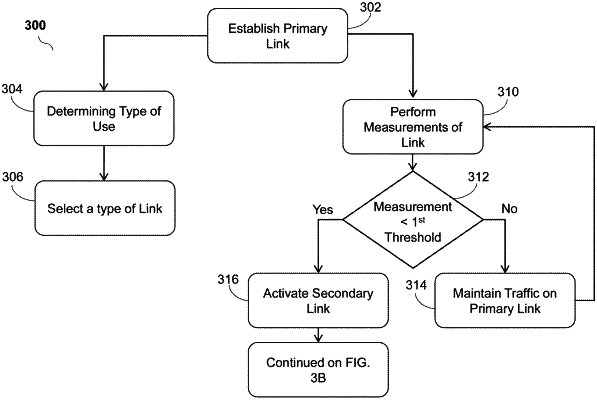| CPC H04W 36/03 (2018.08) [G06F 3/14 (2013.01); H04W 24/10 (2013.01); H04W 36/30 (2013.01); H04W 40/02 (2013.01); H04W 76/15 (2018.02); H04W 76/34 (2018.02)] | 19 Claims |

|
1. A method comprising:
determining, by a first device, that a first measurement of a primary wireless link between the first device and a second device is less than a first threshold, the first measurement corresponding to a quality metric of the primary wireless link at a first time;
activating, by the first device responsive to the first measurement being less than the first threshold, a secondary wireless link to be on standby, the secondary wireless link between the first device and the second device, the primary wireless link supporting a higher throughput than the secondary wireless link;
determining, by the first device, whether a second measurement of the primary wireless link is less than a second threshold, the second measurement corresponding to the quality metric of the primary wireless link at a second time, wherein the second threshold is less than the first threshold; and
transitioning, by the first device when the second measurement is less than the second threshold, traffic on the primary wireless link to the activated secondary wireless link; or
maintaining, by the first device, the traffic on the primary wireless link when the second measurement is greater than the second threshold.
|